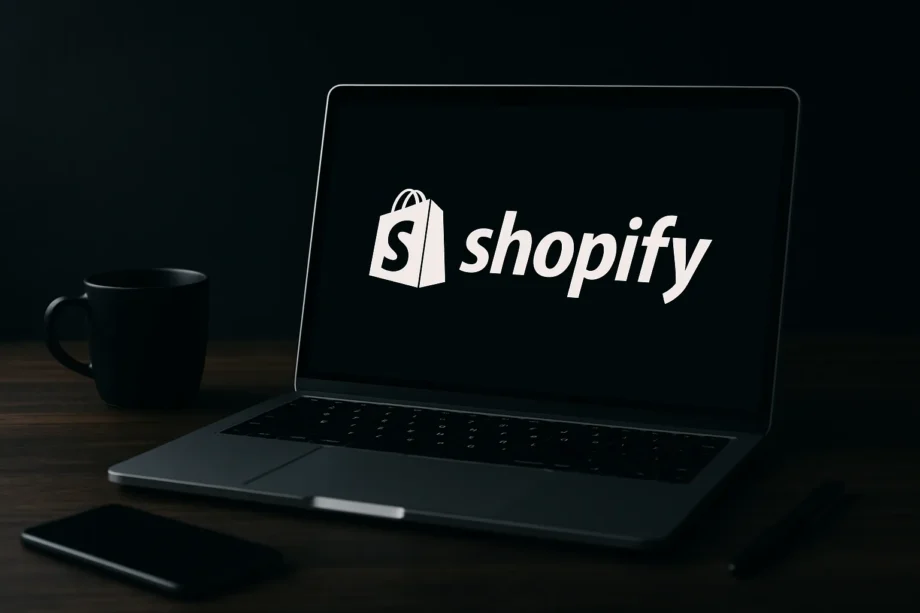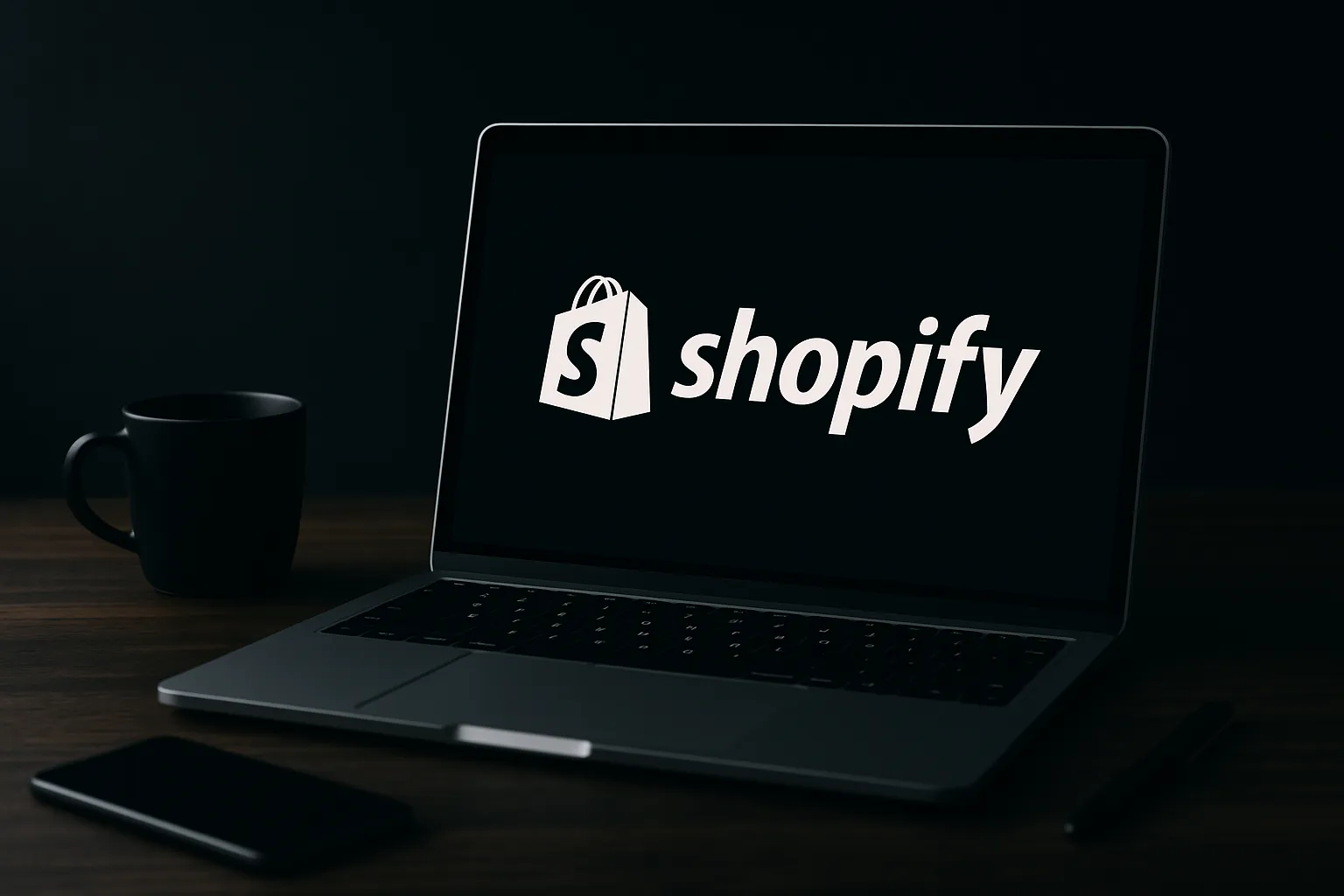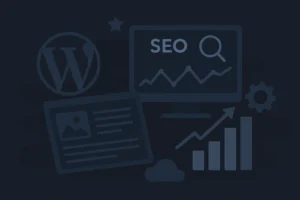So, you’re thinking about using Shopify for your business, huh? Or maybe you’re already on it and wondering if it’s really worth sticking with. Either way, I’m glad you’re here because I’ve got a lot to share. My name is Abi, and I run a little candle-making business here in Dubai. I’ve been using Shopify for the past year to sell my handmade candles online and at local markets, and let me tell you—it’s been quite the ride! I’m writing this Shopify review for 2025 to give you the real scoop on what it’s like to use this platform as a small business owner who’s still figuring things out.
When I first started my business, I was a total newbie to e-commerce. I mean, I could barely keep track of my Instagram orders, let alone build a website or manage inventory. But I kept hearing about Shopify—apparently, it powers over 2 million stores worldwide, which is wild—and I thought, “Okay, if that many people are using it, it’s gotta be good, right?” So, I gave it a shot with their 7-day free trial, and a year later, here I am, ready to spill all the details.
This is going to be a long one— I want to cover everything I’ve learned, from pricing to features to what other people are saying online. I’ll dig into the Shopify Starter Plan review, Shopify POS reviews, Shopify pros and cons, and even the Shopify reviews & complaints I found on sites like Trustpilot and Reddit. Whether you’re curious about Shopify reviews for small business owners like me, selling on Shopify reviews, or Shopify customer reviews, I’ve got you covered. Let’s get into it!
Table of Contents
A Quick Intro to Shopify (What Even Is It?)
If you’re not familiar with Shopify, here’s the rundown. It’s an online platform that helps you create and run a store without needing to be a tech wizard. It started back in 2006 in Canada and has grown into this massive thing that powers millions of businesses—over 2 million stores, to be exact, and they’ve processed over $800 billion in sales, according to their 2024 numbers. Whether you’re selling candles like me, running a clothing boutique, or even building a big brand, Shopify is designed to make it easy to sell online, in person, or pretty much anywhere.
Here’s what you get with Shopify:
- A website builder to make your online store (no coding needed, thank goodness).
- Tools to manage your products, orders, and customers.
- Payment processing through Shopify Payments or other gateways like PayPal.
- Point of sale (POS) features for selling in person (I’ll talk more about that in the Shopify point of sale reviews section).
- Options to sell on social media, Amazon, or other platforms.
- Analytics and marketing stuff to help you grow your sales.
The best part? Shopify handles all the boring tech stuff—like hosting, security, and updates—so you don’t have to worry about your site crashing or getting hacked. It’s made for beginners, but big companies like Allbirds and Gymshark use it too, which I thought was pretty cool. In this Shopify review, I’ll break down how it worked for my little candle business and whether it’s the right fit for you.
Why I Picked Shopify for My Candle Biz
Let me take you back to early 2024, when I started my candle business. I was mostly selling through Instagram—posting pics of my lavender and sandalwood candles and hoping people would DM me to buy. I was making maybe $500 a month, which was nice, but it was chaotic. I’d have to message people back and forth, send PayPal links, and keep track of orders in a notebook. Half the time, people would say they wanted a candle and then disappear after I’d already made it.
Plus, I knew I was missing out on customers because I didn’t have a proper website. Here in Dubai, online shopping is huge—e-commerce is worth over $5 billion, according to some stats I found—so I needed to get serious.
I knew I needed a real online store, but I was terrified. I’m not techy at all—I can barely use Google Sheets, let alone build a website. I’d tried Wix a while back, but I found it confusing, and I didn’t have the money to hire someone to build a site for me. Then I heard about Shopify on a podcast for small business owners. They said it was perfect for people like me—no coding, easy setup, and it could handle both online sales and in-person markets. I also liked that they had a 7-day free trial, so I could try it without spending a dirham. I signed up, and that’s how my Shopify journey started.
My Year with Shopify: 12 Things I Learned
After a year of using Shopify, I’ve got a lot to say—some of it great, some of it frustrating. Here are the 12 biggest lessons I’ve learned, covering everything from pricing to features to what I found in Shopify customer reviews. I’ll also weave in keywords like Shopify online store reviews and selling on Shopify reviews to give you the full picture.
Lesson 1: Pricing Plans—Lots of Options, But They Add Up
Shopify has a bunch of plans, which is nice because there’s something for every budget. But it can also be a bit much to figure out what you actually need. Here’s how they break down in 2025, based on what I’ve seen:
- Shopify Starter Plan ($5/month): This is the cheapest one—just $5 a month. You don’t get a full website, but you can create product pages with links to share on social media or email.
- Basic Shopify ($39/month): For $39 a month (or $29 if you pay for the year), you get a proper online store with unlimited products, a blog, and some basic features like abandoned cart emails.
- Shopify (Standard) ($105/month): This one’s $105 a month ($79 if you pay annually) and gives you more staff accounts and better sales reports.
- Advanced Shopify ($399/month): At $399 a month ($299 annually), this is for bigger businesses with advanced reporting and tools for international selling.
- Shopify Plus (starts at ~$2,000/month): This is for huge companies, starting at around $2,000 a month with custom pricing.
There are a few extra costs to keep in mind:
- Transaction Fees: If you use Shopify Payments, you just pay the credit card fee (like 2.9% + 30¢ on Basic). But if you use something else like PayPal, Shopify charges an extra 0.5–2% per sale, depending on your plan.
- Apps: Some apps are free, but a lot of them cost $5–$50 a month.
- Hardware: If you’re selling in person, Shopify POS gear like card readers can cost $49–$500.
I went with the Basic Shopify plan at $39 a month because I wanted a real website, not just links. The unlimited products were perfect since I knew I’d be adding more candles as I grew. But the costs can pile up—I’ll talk more about that in the Shopify pros and cons section.
What I Think: Shopify’s pricing gives you choices, but there’s no free plan, which kinda stinks. The 7-day trial is nice, though, and I’d recommend starting there to see what works for you.
Lesson 2: Shopify Starter Plan Review—Good for Testing, Not for Growing
Before I settled on the Basic plan, I tried the Shopify Starter Plan for a bit during the trial. It’s only $5 a month, so it’s super cheap, and it’s meant for people who want to sell without a full website—like if you’re an influencer or just testing an idea. You get product pages with buy buttons that you can share on Instagram, TikTok, or even in emails. They also give you a tool called Linkpop, which lets you make a link-in-bio page for social media.
I set up a page for my lavender candle, added a picture and a little description, and shared the link on my Instagram Stories. I was so excited when I got two sales in a day—$40 total! The checkout was secure, and customers could pay with their credit card or Apple Pay. I even used Shopify Inbox to chat with a customer who asked if the candle was pet-safe (it is, by the way). The basic analytics showed me how many people clicked the link and bought, which was pretty cool to see.

But here’s the catch: the Starter Plan is really limited. You can’t build a full website, so there’s no way to make an “About” page or a blog to get more traffic. You’re stuck with a default theme called Spotlight, and you can’t change much about it. Also, Shopify POS isn’t included, which was a problem for me since I sell at markets. And the 5% transaction fee on top of credit card fees is a lot—I’d rather not lose that much per sale. I saw a Shopify Starter Plan review online where someone said it’s great for testing but not for long-term growth, and I totally get why.
What I Think: The Starter Plan is perfect if you’re just starting out with one or two products—like if you’re selling an e-book or some merch. But for a business like mine, it’s way too basic.
Lesson 3: Setting Up My Store Was Easier Than I Expected
Once I upgraded to the Basic Shopify plan, I got to build a real online store, and I couldn’t believe how simple it was. Shopify has this drag-and-drop editor where you pick a theme and tweak it however you want—no coding required. They have over 200 themes to choose from—12 are free, and the paid ones cost $150–$400. I picked a free theme called Dawn because it looked clean and pretty, which fits my candle vibe.
I added my logo, changed the colors to soft purples and creams to match my brand, and moved sections around to show off my best-selling candles. I also made an “About” page to share my story—I started making candles during the pandemic as a hobby—and I added a blog where I wrote a post called “5 Ways to Make Your Home Smell Cozy.” It took me maybe 3 hours total, and when I was done, my site looked so professional.
I showed it to my sister, and she thought I’d hired someone to build it! Plus, the themes are mobile-friendly, which is a big deal since most of my customers shop on their phones—about 70% of my traffic, according to Shopify.
I also liked that Shopify makes SEO stuff easy. I could edit the meta titles and descriptions for my product pages, and the URLs were nice and clean (like abiscandleco.com/products/lavender-candle). I added a sitemap too, which I heard helps Google find your site. After a month, my blog post started showing up when people searched for “how to make your home smell cozy,” and I got 100 extra visitors because of it. That’s something I couldn’t do with the Starter Plan.

What I Think: If you’re not techy like me, Shopify’s store builder is a lifesaver. You can have a gorgeous site up in a day, and the SEO tools help you get noticed.
Lesson 4: The Checkout Process Won Over My Customers
One thing I noticed pretty quickly was how smooth Shopify’s checkout is. When someone buys a candle, they add it to their cart, fill in their details, and pay—all on a secure page that looks professional. Shopify lets customers pay with credit cards, Apple Pay, Google Pay, and even this thing called Shop Pay, which lets returning customers check out in one click. I read somewhere that Shop Pay can boost conversions by about 40%, and I believe it—my checkout completion rate is around 75%, which I’m pretty proud of.
Shopify also has this feature called abandoned cart recovery (on Basic and up), where it emails people who leave stuff in their cart. I set up an email that says, “Hey, your candle’s waiting for you!” with a 10% off code. That brought back about 15% of those abandoned carts, which added $300 to my sales in the first month. In 2023, Shopify made the checkout even faster with a one-page design, and in 2025, they added something called Checkout Blocks, so you can add things like upsells after the purchase—like suggesting a candle holder to go with their candle.
The only thing I didn’t love is that on the Basic plan, you can’t really customize the checkout—like adding a fancy thank-you page. You’d need a higher plan or Shopify Plus for that, which I can’t afford right now.
What I Think: Shopify’s checkout is fast and makes customers feel safe, which is why Shopify online store reviews are usually so good.
Lesson 5: Shopify Payments Took the Stress Out of Getting Paid
I was really worried about handling payments online—I’d heard stories about people getting scammed or dealing with chargebacks. Shopify Payments made it so much easier than I expected. It’s Shopify’s own payment processor, and it accepts credit cards, Apple Pay, Google Pay, you name it. On the Basic plan, the fee is 2.9% + 30¢ per transaction, which seemed fair to me. The best part is there’s no extra Shopify fee if you use Shopify Payments. If you use something else like PayPal, Shopify charges 2% per sale on Basic, which drops to 0.5% on higher plans.
Setting up Shopify Payments was a breeze—I just added my bank details, and I started getting payouts in 1–3 days. I could see everything in the Shopify dashboard, even when I had a chargeback (one customer disputed a $20 order, but Shopify helped me sort it out). Shopify Payments also lets you accept payments in different currencies, which is awesome since I get orders from the UAE, Europe, and sometimes the U.S.
I did see some Shopify reviews & complaints online about payout holds—some people said their money was frozen for weeks because Shopify thought their account looked suspicious. That hasn’t happened to me, but it’s something to watch out for, especially if you’re selling something considered “high-risk” like CBD. Also, Shopify Payments isn’t available everywhere, so you might have to use another gateway and pay the extra fees.
What I Think: Shopify Payments is straightforward and took away my payment worries, but make sure it’s available in your country and read the fine print.
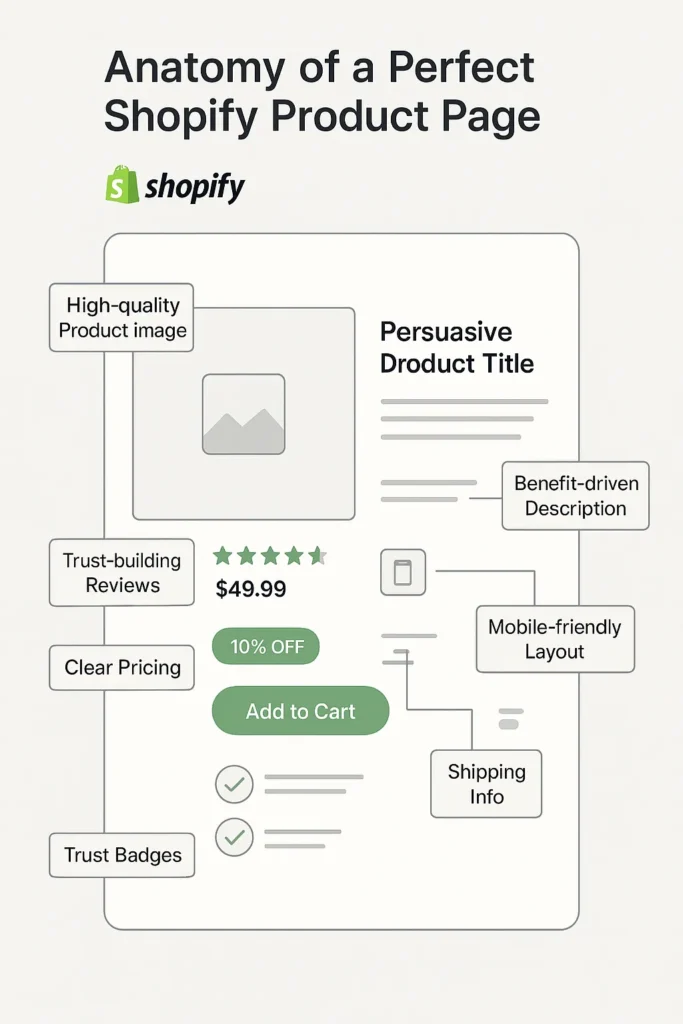
Lesson 6: Analytics Showed Me What My Customers Actually Want
Shopify’s analytics dashboard was a total game-changer for me. Even on the Basic plan, I could see how many people visited my store, where they came from, and what they were buying. There’s this “Live View” feature that shows you what’s happening in real time—like if someone’s browsing or checking out—which I loved watching during a big sale. The reports show your sales, traffic, conversion rates, and customer behavior, and you can download them as CSVs if you want to dig deeper.
For example, I saw that 60% of my traffic was coming from Instagram, but only 2% of those people were buying. Meanwhile, the traffic I got from Google (thanks to my blog) had a 5% conversion rate. That made me realize I should focus more on SEO and blog posts, which ended up bringing in 200 more visitors a month. I also noticed that my sandalwood candle was my best seller, so I started pushing it more in my emails and Instagram posts.
If you’re on higher plans like Shopify ($105/month) or Advanced ($399/month), you get fancier reports—like professional or custom analytics—but I found the Basic reports more than enough for my little business. The only thing I wished for was more detail on stuff like customer lifetime value, but I’d probably need an app for that.
What I Think: Shopify’s analytics are easy to use and helped me figure out what’s working, which is why Shopify reviews for small business owners often mention them.
Lesson 7: Marketing Tools Helped Me Sell More Candles
Shopify has a bunch of marketing tools built in, which I used a lot to grow my sales. Here’s what I tried:
- Shopify Email: I could send newsletters to my customers, and they give you a few free emails each month. I sent a “Spring Sale” email to 500 customers with a 15% off code, and it brought in $800 in sales.
- Discount Codes: I made codes like “WELCOME10” for new buyers, which bumped my conversion rate up by 3%.
- Multi-Channel Selling: I connected my store to Instagram and Facebook Shops, so people could buy straight from my posts. That brought in $500 in sales in my first month.
- SEO Tools: I already mentioned the SEO stuff, but it’s worth saying again—meta tags, clean URLs, and sitemaps helped me show up on Google.
Shopify also lets you connect to Google Shopping, TikTok, and Pinterest, and there’s a Marketing tab to see how your campaigns are doing. I loved that I didn’t need a separate email tool or ad platform—everything was right there. The only thing is, the blogging feature isn’t as good as something like WordPress, so if you’re big on content marketing, you might need an app like Yoast to help with SEO.
What I Think: Shopify’s marketing tools are great for beginners—they helped me get more sales without spending a lot on ads or extra tools.
Lesson 8: The App Store Saved Me (But Also Cost Me)
Shopify’s App Store is huge—over 8,000 apps for all kinds of things, like reviews, dropshipping, or loyalty programs. I added a few to my store:
- Loox ($9.99/month): This app let me collect photo reviews from customers, which made my product pages look more legit. I got 20 reviews in the first month, and my conversion rate went up 2%.
- DSers (Free): I used this to dropship some candle holders—I didn’t have to stock them myself, which saved me money.
- Privy ($15/month): This added pop-ups to my site to collect emails, growing my list from 100 to 500 subscribers.
The apps were super easy to install—just a few clicks, and they were part of my Shopify dashboard. But the costs add up fast. I was spending $25 a month on apps, which doesn’t sound like much, but it’s on top of the $39 for Basic Shopify. I also noticed my site got a bit slower after adding three apps—I had to remove one to fix it. I saw in some Shopify reviews & complaints that people were annoyed about needing apps for things like multi-language support, which Shopify doesn’t have built-in.
What I Think: The App Store lets you add whatever features you need, but you’ve got to be careful about the costs and how many you use.
Lesson 9: Shopify POS Reviews—How It Worked at My Market Stall
Since I sell at local markets in Dubai, Shopify POS was a big reason I chose Shopify. It lets you sell in person and sync everything with your online store. On the Basic plan, you get POS Lite for free, which works through the Shopify POS app on your phone or tablet. You can buy a card reader for $49 to take payments, or a full retail kit for $500+ if you’ve got a bigger setup.
I got the $49 card reader and used POS Lite at a weekend market. It was so easy to use—my inventory synced automatically, so if I sold a lavender candle in person, it was taken out of my online stock. I could take payments with the card reader (2.7% fee per transaction), and the app let me email receipts to customers. I sold $200 worth of candles in one day, and it all showed up in my Shopify dashboard alongside my online sales.
I looked up Shopify point of sale reviews online, and most people love the inventory sync. Someone on Capterra said, “Integration with our online store is a breeze,” which I totally get. But there are some downsides. If you want more features—like unlimited registers or staff permissions—you need POS Pro, which costs $89/month per location. That’s way too much for me since I only do markets a few times a month. I also read a Shopify POS review on Reddit where someone said the app felt “clunky” compared to Square, especially for bigger retail setups.
What I Think: Shopify POS is awesome for small sellers like me who just need the basics, but the Pro version and hardware costs might be too much for some.
Lesson 10: Shipping and Inventory Were a Breeze
Shipping was another area where Shopify made my life easier. I could set up shipping rates based on price, weight, or location—like $5 for orders under $50 and free shipping over $50. Shopify Shipping gives you discounted rates with carriers like USPS and DHL, but it’s only available in the U.S. and Canada. Since I’m in Dubai, I had to set up my own rates with a local courier, but it was still pretty simple—Shopify let me print labels and send tracking emails to customers automatically.
I also used Shopify’s inventory tools to keep track of my stock across my online store and markets. If I only had 5 lavender candles left, Shopify would show that on both channels, so I never oversold anything. I tried dropshipping some candle holders using the DSers app for a while—it was seamless, and I didn’t have to touch the inventory myself.
The only thing I didn’t like was that real-time carrier shipping (like showing exact rates at checkout) isn’t available on the Basic plan—you need Advanced or an app for that. Also, Shopify Shipping isn’t available in the UAE yet, which was a bit disappointing.
What I Think: Shopify makes shipping and inventory so easy, even if you’re not in a supported region for Shopify Shipping.
Lesson 11: Managing Customers Kept Me Sane
Shopify automatically keeps track of your customers based on who buys from you or abandons their cart. I could see their order history, tag them (like “VIP” for people who spent over $100), and group them for email campaigns. For example, I tagged 50 customers as “frequent buyers” and sent them a 20% off code, which brought in $400 in sales.
I also turned on optional customer accounts, so shoppers could save their details and see their order history. About 30% of my customers made accounts, and I noticed they were more likely to come back—my repeat purchase rate went up to 20%. Shopify Email let me send personalized campaigns to these customers, which was really helpful.
It’s not a full CRM like HubSpot, though. If you want advanced stuff like automated workflows, you’ll need an app. Also, the account customization options are pretty basic unless you use the 2025 Customer Account Extensions update (I’ll talk more about that later).
What I Think: Shopify’s customer management tools are simple but kept me organized and helped me get more repeat sales.
Lesson 12: I Never Worried About Security or Crashes
One thing I never had to stress about with Shopify was security or my site going down. Shopify is fully hosted, so they take care of all the tech stuff—updates, backups, security, everything. They give you a free SSL certificate, so my site shows that little padlock in the browser, which makes customers feel safe. They’re also PCI compliant, so payments are secure, and they promise 99.9% uptime. During a big sale I ran for Eid, I had 1,000 visitors in one day, and my site didn’t even hiccup.
Shopify uses a global CDN (content delivery network), so my site loads fast for customers in Dubai, Europe, or wherever. I saw in some Shopify online store reviews that people were getting load times under 2 seconds, and I’d say that’s about right for me too. The only thing I heard about was a rare outage back in 2021 that affected all Shopify stores for a few hours—I read about it in Shopify reviews & complaints—but I haven’t had any issues like that.
What I Think: Shopify’s security and performance are solid. I never had to worry about my site crashing or being hacked, which gave me peace of mind.
The Good and the Bad: Shopify Pros and Cons
Here’s my take on the best and worst parts of Shopify, based on my experience and what I’ve read in Shopify customer reviews.
Shopify Pros
- So Easy to Use: The dashboard and store builder are super simple—I had my site up in a day.
- Everything in One Place: Hosting, security, payments, POS—it’s all there, which saves so much time.
- Grows with You: From $5 to $2,000/month, Shopify can handle your business as it gets bigger.
- Lots of Apps: 8,000+ apps let you add stuff like reviews or subscriptions.
- Sell Anywhere: Online, in-person, Instagram, Amazon—Shopify makes it easy.
- Safe and Reliable: 99.9% uptime, SSL, and PCI compliance keep everything secure.
- Great Features: Abandoned cart recovery, SEO tools, and analytics come with the plan.
- Help When You Need It: 24/7 support via chat, email, or phone, plus a big community.
- Looks Professional: The themes make your store look legit, even if you’re just starting out.
- Sell Globally: Shopify Markets makes it easy to sell internationally.
Shopify Cons
- Costs Can Add Up: Apps and fees can get pricey—I was spending $64/month total.
- Transaction Fees: If you don’t use Shopify Payments, you’ll pay 0.5–2% per sale.
- Not Much Customization: You’ll need coding skills (or a developer) for advanced changes.
- Need Apps for Everything: Stuff like multi-language support requires paid apps, which adds up.
- Support Isn’t Always Great: Some Shopify reviews & complaints say support is slow for tricky issues.
- No Free Plan: Unlike Wix, you can’t start for free—the cheapest is $5/month.
- Account Risks: Some people report payout holds or account closures for fraud checks.
- Blogging Isn’t the Best: The blog feature is okay but not as good as WordPress.
- Advanced Stuff Takes Time: Features like Shopify Markets can be a lot to set up.
- POS Costs: POS Pro ($89/month) and hardware ($49–$500) can be expensive.
What I Think: Shopify has way more good than bad for a small business like mine, but the costs and app reliance can be frustrating.
What Other People Think: Shopify Reviews & Complaints
I wanted to see what other people thought, so I checked out Shopify customer reviews on sites like G2, Capterra, Trustpilot, Sitejabber, BBB, and Reddit. Shopify gets a 4.4/5 on G2 (over 4,600 reviews) and 4.5/5 on Capterra, but only 1.5/5 on Trustpilot, which shows there’s a mix of opinions out there.
What People Love
- Easy to Use: Someone on Capterra said, “Shopify is my favorite because it’s so user-friendly.” Beginners love how fast they can get started.
- Looks Professional: Shopify online store reviews often say it makes you look “bigger than you are” thanks to the themes and checkout.
- Lots of Features: A 2024 G2 review said, “Reporting, integrations, and website building are so impressive.”
- POS Sync: Shopify point of sale reviews on Capterra (4.6/5) love the inventory sync: “It’s seamless for our boutique.”
- Helps You Grow: Lots of users say Shopify helped them scale from $100 to $100,000 in sales without switching platforms.
What People Don’t Love
- Costs: “It’s pricey with apps,” someone on Capterra said. Transaction fees annoy people who don’t use Shopify Payments.
- Support Issues: Some Shopify reviews & complaints on Reddit call support “horrible” for complex problems.
- Account Holds: Trustpilot has complaints about frozen payouts or account closures, often tied to fraud checks.
- Customization Limits: A G2 user said, “It’s limited without coding,” frustrated by theme constraints.
- POS Costs: Shopify POS reviews mention the $399 POS Go device being too expensive for small shops.
What I Found
Most Shopify reviews for small business owners are positive—91% recommend it on Capterra. But the complaints on Trustpilot (1.5/5) are pretty loud, especially about support and account issues. I haven’t had those problems myself, but it’s worth being careful and reading Shopify’s terms.
What I Think: Shopify is loved for its ease and features, but costs and support issues are real concerns for some people.
Shopify for Small Businesses vs. Solo Sellers
Shopify works for both solo sellers and small businesses, but it’s a bit different depending on what you need. Here’s how it breaks down.
For Solo Sellers
If you’re a solo seller—like an artist or influencer with a few products—the Shopify Starter Plan ($5/month) is a great way to start. You can create product links and share them on social media without needing a full website. I read in some selling on Shopify reviews that people loved how it made them look professional with minimal effort. For example, a crafter might use Starter to sell prints on Instagram, then upgrade to Basic ($39/month) for a website once they’re ready to brand.
Pros: Looks professional, easy to set up, and scales if you grow.
Cons: $39/month can eat into small profits, and you might be better off on Etsy if you’re tiny.
For Small Businesses
For small businesses like mine—with 10–1,000 products—the Basic or Shopify plans are perfect. You get a full store, POS for in-person sales, and staff accounts to manage a team. Shopify reviews for small business often mention the POS sync as a lifesaver: “Seamless for our store and site,” one boutique owner said. I use Basic Shopify to manage my online sales and market stall, and it keeps everything in order.
Pros: Unified inventory, analytics, and multi-channel selling help you grow.
Cons: App costs and fees add up, and high-volume stores might need custom payment processors.
What I Think: Solo sellers get a polished start with Shopify, but small businesses benefit the most from its all-in-one features.
What’s New with Shopify in 2024–2025
Shopify keeps updating the platform, and the 2024–2025 changes have made it even better. Here’s what’s new, based on what I’ve seen in Shopify online store reviews:
- Checkout Extensibility: You can now add upsells, surveys, or banners after checkout on all plans (used to be just for Plus). I added a “Buy a candle holder” upsell, which brought in $100 extra last month.
- Customer Accounts: The Customer Account Extensions let you add loyalty points or wishlists to customer accounts. I haven’t tried this yet, but it sounds great for repeat buyers.
- Shopify Magic (AI): Shopify’s AI can write product descriptions, blog posts, emails, and even chat replies. I used it to write a description for my new rose candle, and it saved me 20 minutes.
- Search and Navigation: Semantic search lets customers find products with natural queries (like “cozy candle”), and customizable filters make browsing easier.
- Subscriptions and Bundles: Shopify added a native Subscriptions app and bundling features, so you don’t need as many third-party apps for recurring sales.
- Performance: The Winter ’25 update focused on speed and stability—my site loads faster, and the APIs are more reliable for developers.
What I Think: These updates show Shopify is listening to users—adding native features like subscriptions and AI makes it even more powerful.
Shopify vs. Other Platforms: How It Compares
Shopify isn’t the only option out there, so I looked at how it stacks up against Wix, WooCommerce, BigCommerce, and Square Online in 2025.
- Wix:
- Pros: Cheaper ($17–$35/month), more design flexibility, free plan.
- Cons: Not as e-commerce-focused, weaker POS, fewer apps.
- Best For: Content-heavy sites or tiny budgets.
- Vs. Shopify: Shopify wins for serious e-commerce with better tools and scalability.
- WooCommerce (WordPress):
- Pros: Free plugin, total control, no extra transaction fees.
- Cons: Needs hosting ($5–$50/month), more technical, no native POS.
- Best For: Tech-savvy users or content-driven stores.
- Vs. Shopify: Shopify’s ease and all-in-one setup are better for beginners.
- BigCommerce:
- Pros: Robust features, no transaction fees, native multi-currency.
- Cons: Steeper learning curve, pricier ($39–$399/month).
- Best For: B2B or international stores.
- Vs. Shopify: Shopify’s user experience and app ecosystem are more beginner-friendly.
- Square Online:
- Pros: Free plan, cheap POS hardware, no monthly fees for basics.
- Cons: Limited design, fewer integrations, basic e-commerce.
- Best For: Restaurants or retail-first businesses.
- Vs. Shopify: Shopify’s online store and multi-channel features are way better.
Shopify scores 4.4/5 on G2, beating Wix (4.2), BigCommerce (4.2), and Square (4.3), which shows it’s a crowd favorite.
What I Think: Shopify strikes a great balance of ease and power—it’s better for e-commerce than Wix or Square, and easier than WooCommerce or BigCommerce.
My Honest Opinion: Is Shopify Worth It in 2025?
After a year of using Shopify, I can honestly say it’s been a lifesaver for my candle business. It gave me a professional online store, made selling at markets so much easier, and helped me grow my sales from $500 to $2,000 a month. The ease of use, features like abandoned cart recovery, and reliable performance (99.9% uptime) made it worth the $39/month I pay for Basic Shopify. Things like Shopify POS, the App Store, and multi-channel selling let me reach more customers without stressing about the tech side.
But it’s not perfect. The costs can add up—I’m spending $64/month with apps—and I got a little worried reading some Shopify reviews & complaints about support and account holds. The fact that there’s no free plan and you need apps for stuff like multi-language support can be annoying too. But overall, the good outweighs the bad for me. Shopify reviews for small business owners like me are mostly positive for a reason—it saves time and helps you grow.
If you’re a beginner or small business looking to sell online and maybe in person, I think Shopify is a great choice. The 7-day trial lets you test it without risking anything, so I’d say give it a shot. Upload a few products, play with a theme, and see how it feels. For me, Shopify has been a partner in growing my little candle business, and I’m excited to see where it takes me next.
My Recommendation: Shopify is worth it if you want a reliable, all-in-one platform to build and grow your store. Try the trial and see if it’s right for you.
FAQs: Your Shopify Questions Answered
What is Shopify?
It’s an online platform that lets you build a store, manage sales, and sell across multiple channels—no coding needed.
How much does Shopify cost?
Plans start at $5/month (Starter), with Basic at $39/month, Shopify at $105/month, Advanced at $399/month, and Shopify Plus at ~$2,000/month.
Does Shopify have a free plan?
Nope, but there’s a 7-day free trial with no credit card required.
Is Shopify good for small businesses?
Yes! Shopify reviews for small business owners love its ease of use, features, and scalability.
Can I sell in person with Shopify?
Yeah, Shopify POS lets you sell in person and sync with your online store. Check out Shopify point of sale reviews for more details.
Final Thoughts: Should You Give Shopify a Try?
Thanks for sticking with me through this Shopify review—I know it was a long one! I wanted to share everything I’ve learned as a small business owner using Shopify in 2025. From setting up my candle store to selling at markets, Shopify has made my life so much easier. It’s not the cheapest option out there, and it has its quirks—like app costs and no free plan—but the time it saves and the sales it drives make it worth it for me.
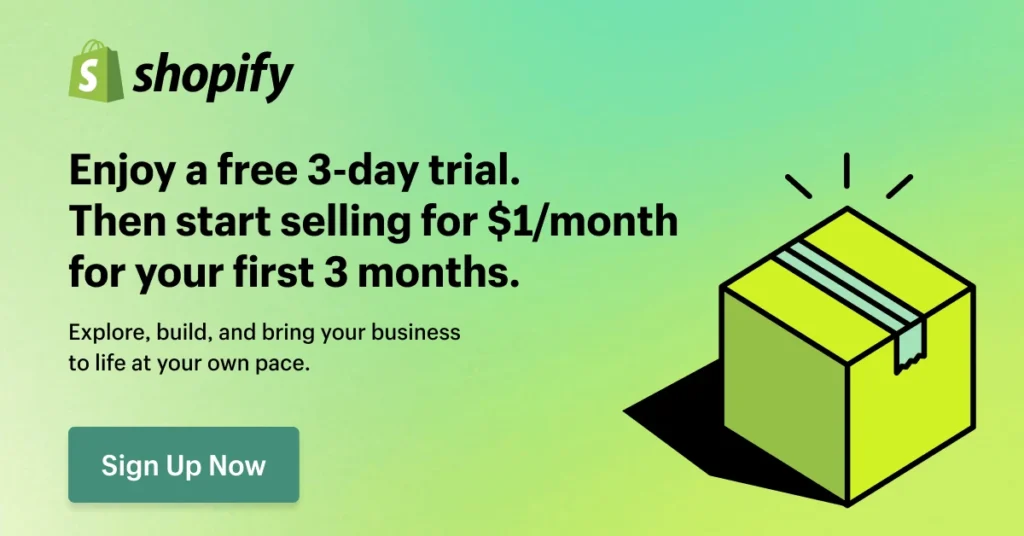
If you’re ready to start or grow your online store, I’d say Shopify is a solid choice. The 7-day trial is your chance to test it out—set up a few products, try the POS, and see how it feels. I’d love to hear what you think—have you tried Shopify? Drop a comment below or send me a message!


